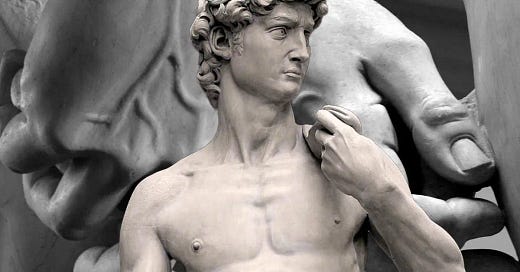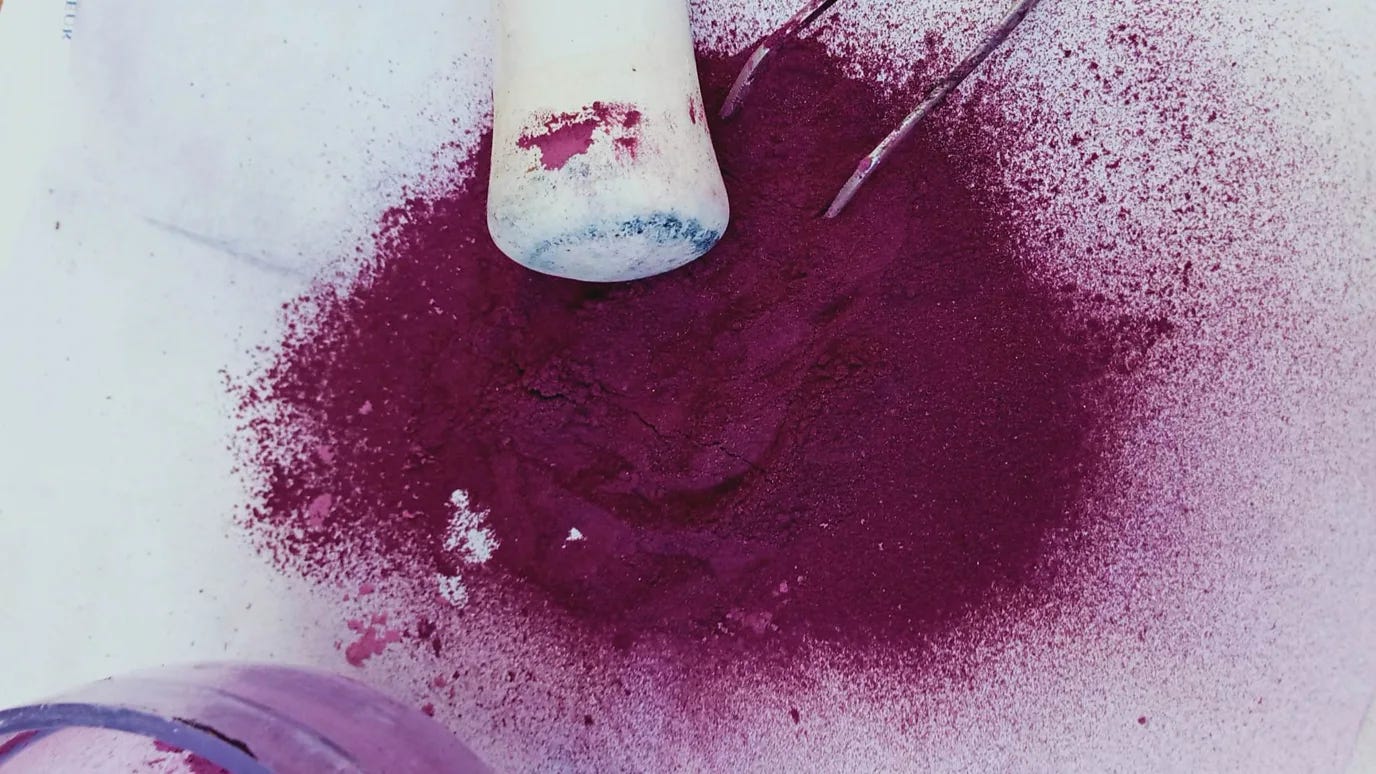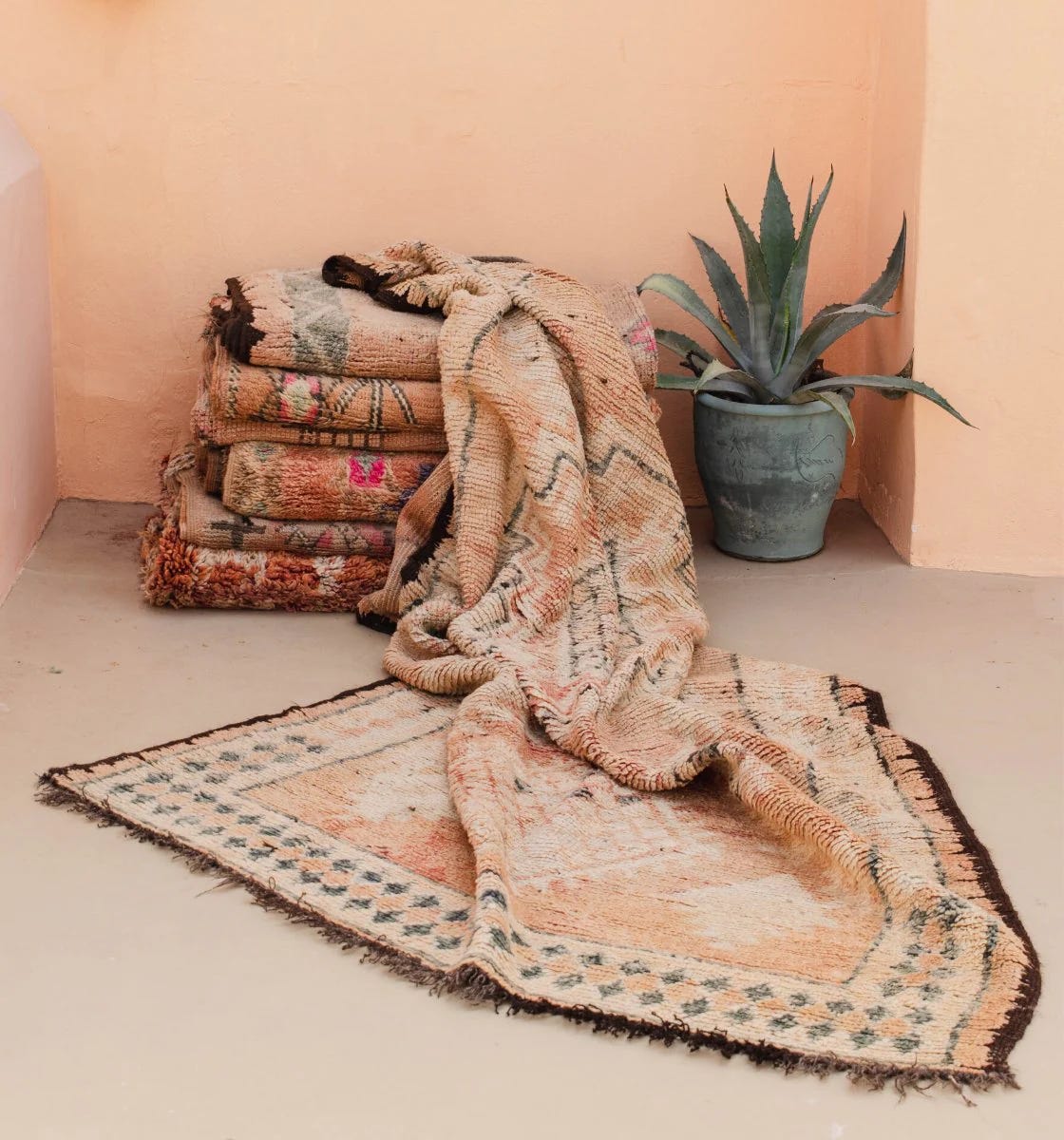The Chair, the Rug, and the Paradox
A festive reflection on value, rarity and the ultimate gift.
I always struggle at Christmas time, not because of my family, who are quite frankly a dream compared to what some people deal with, not because of the cold, dark nights that stretch out endlessly; I've got that covered by my annual migration closer to the equator or the inevitable chaos of trying to make a Christmas dinner simultaneously wanting and rejecting all help because I’m a glutton for punishment who refuses to listen to reason. No, my problem with this time of year is all the stuff. Christmas is a time that has become more and more about stuff. We buy presents, cards, outfits, dinners, nights out, and so, so, many other things. And, if I’m being completely honest— I struggle with the stuff. I can’t get my head around the point.
“Here, wait a minute!” You may exclaim. Yes, I know I sound like a hypocrite. Coming from someone whose career literally revolved around telling other people what stuff they needed, who am I to judge? Honestly, I'm not judging. This is my own moral quandary, and whether you agree or disagree or think I’m the living embodiment of the pot calling the kettle black is entirely your prerogative. What I will say in my defence is that just because you do something as a job doesn’t necessarily mean you can’t disagree with elements of it. In truth, I also spent a huge amount of time telling people they didn’t need stuff they were convinced they needed—so there’s that.
Don’t get me wrong, I love buying presents and party dresses and going for dinner. In fact, they are up there with some of my favourite things to do—one look at my Instagram will tell you that—but it seems I always find myself a little conflicted at this time of year. So many people end up in a “stuff for stuff’s sake” mentality because it’s expected. We overspend and over-buy on things that we don't need or that don’t mean anything, and it all just feels a bit cheap, even though, of course, it’s far from it. So, it got me thinking about value and what value actually means. What makes something valuable?
In the 1940s, Finnish designer Alvar Aalto introduced the Model 60 stool, a simple, stackable three-legged design made from bent birch wood. It became a hallmark of Scandinavian modernism—clean lines, functional beauty, and a touch of timeless craftsmanship. Today, an original Aalto stool from Artek will cost you £200 for a vintage version, closer to £1000. Meanwhile, Maisons Du Monde offers a near-identical stool for less than £65. At first glance, they’re practically indistinguishable: both have that beautiful steamed birch and minimalist form we associate with Nordic design. Yet, we instinctively know these two objects are not the same thing. Why?
The answer isn’t as simple as quality or comfort. We're talking about a solid wooden stool here. It’s tangled up in history, rarity, and our own perceptions of beauty. Why do we pay more for what feels special? And does rarity make an object beautiful, or do we convince ourselves of its beauty because it’s rare?
The Power of the Rare
Look for a second at Tyrian purple, the colour of emperors—or so we’ve all been told. It wasn’t a pigment—it was an ordeal. Derived from the mucus of thousands of sea snails, up to 10,000 for one piece of fabric. Each batch required labour that bordered on the absurd. By the time it reached the robes of a Roman senator, it was more than just a nice coloured fabric that made his blonde curls pop; it was a symbol of power, exclusivity, and wealth.
But was Tyrian purple truly beautiful, or did its rarity make it seem so? Immanuel Kant, in his Critique of Judgement, argued that true beauty is disinterested—we should appreciate it for its form, not its function or the status it confers. For Kant, beauty arises when something strikes us as universally pleasing, detached from personal gain or societal associations. In theory, then, Tyrian purple’s beauty should lie in its hue, not its exclusivity. Yet, when we place it within the framework of Roman culture—where power and wealth were displayed as much as exercised—can we really separate the colour’s intrinsic appeal from the narrative woven around it?
This is the tension of Kant’s philosophy: can beauty ever exist in isolation, or is it always shaped by context? Would Tyrian purple hold the same allure if it had been as common as clay, slapped casually onto the walls of every Roman tenement? Kant might argue that rarity should be irrelevant to beauty, but human behaviour suggests otherwise. The scarcity of Tyrian purple didn’t just heighten its value; it amplified its aesthetic impact, turning it into a colour that symbolised not just beauty but real significance.
In interior design, we see this dynamic play out constantly. Consider marble—Carrara versus any of the many more affordable counterparts. Carrara’s value isn’t held in its luminous whiteness but in its heritage. Michelangelo carved his David from it, for goodness sake. Architects and designers have prized its translucent quality for centuries. But here’s the Kantian question: is Carrara marble beautiful because of its texture and shimmer or because we’ve been told it is the best one? And if we replaced it with Caesarstone or Corian, or even a Calacatta or Statuario marble, does the space it’s used in lose its magic—or does it still feel timeless and grand?
Perhaps Kant’s idea of disinterested beauty works best in theory, while in practice, rarity and history are inseparable from how we experience beauty. Luxury often intertwines with the stories and associations we bring to objects, and that's what shapes our perception of their worth. The marble isn’t just a material; it’s a story. The Tyrian purple isn’t just a colour; it’s a claim to an empire. And maybe, just maybe, the beauty is in the meaning as much as the form.
The Stories We Tell
Nowhere is the relationship between beauty and rarity more evident than in the materials we choose for our interiors. Consider a chandelier made by Murano artisans in Venice. Undoubtedly, it’s a masterpiece. Each piece of glass is shaped by hand, requiring hours of work and generations of skill. The artisans manipulate molten glass at over 1,000 degrees Celsius, layering colours and sculpting forms with extraordinary precision, one slip and its dust, literally. When its complete, its a light fitting that refracts light in ways a machine-made replica simply cannot. The latter may mimic the shape, but it will always lack the subtle imperfections—the ripples, the dimples, the slight asymmetry—that make the real thing shine. Craftsmanship, in this sense, isn’t just about something functional; it infuses it with life and history. It is born, not made.
And then, of course, there’s provenance. A Moroccan kilim rug is woven strand by strand by Berber artisans in the Atlas Mountains. Each rug tells a story of a person and place through its patterns and symbols, representing family histories, local traditions, and even the landscape surrounding where it came from. The dyes are derived from plants, minerals and saffron, and their hues deepen and change with time. The crooked lines, the uneven tones, the small but deliberate imperfections that remind you a human hand was here. Take that away—replace it with a machine-made version—and what’s left is functional, yes, but soulless. The copy serves a purpose, but it doesn’t invite you into its story.
Walter Benjamin called this unique presence aura—an object’s connection to its origin, its history, its singularity. A mass-produced replica, no matter how visually similar, cannot replicate that. It may serve the same purpose, but it lacks the soul of the original. The imperfections of the handwoven rug are precisely what make it beautiful. They are evidence of the human touch, of effort and most significantly, in my opinion, the intent of a story embedded in each thread.
Is Time the Ultimate Luxury?
Here’s the paradox: while we chase objects of value, as we so often do at this time of year, we often overlook the one truly finite resource—time itself. A handmade dining table tells a story of hours, days, even months spent shaping it. An antique carries the imprint of the lives of owners before ours. Time adds depth, meaning, and connection. And yet, it’s the one thing we so rarely think to give.
At Christmas, surrounded by the stuff of the season, it’s easy to forget that the most meaningful things are not the things at all. It’s the hours spent debating over and choosing a thoughtful gift, one someone needs, or that will mean something to them. It's the evening off work where everyone has made the effort to gather around grans old table with the people they love. These are the things that hold real value, not because they’re rare but because they’re fleeting.
Perhaps that’s the ultimate luxury: the time is given freely, not hurriedly spent. However, that looks. A £10,000 chair might carry exclusivity, but it’s the time spent in it, laughing, listening, and living, that makes it truly valuable.







Thanks Kylie! Thats very kind of you.
👍🏻